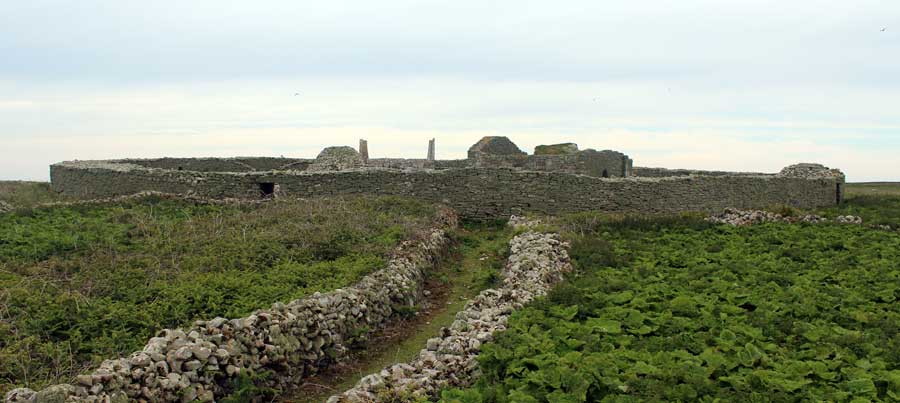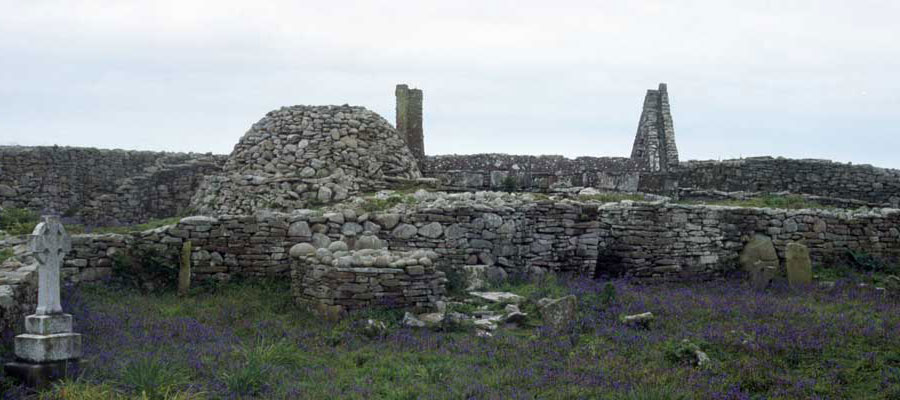Inishmurray Co Sligo
The monastery on Inishmurray is said to have been founded around 520 AD by Saint Molaise, a mysterious figure also associated with Rossinver and Devenish Island in Lough Erne. The Annals tell us that the monks inhabited the island from the sixth to the twelth century, when they moved to the mainland at Screen in west Sligo.

Little is known of the Inishmurray monastery and there are a scant few mentions in the Annals of the Four Masters. Viking raids are mentioned, probably the main reason for the monks leaving the island:
795 - Raids on the monasteries of Rathlin, Inishmurray and Inishbofin.
What remains are the buildings, altars and the magnificant art, the finest collection of Early Irish Christian engraved slabs outside Clonmacnoise.
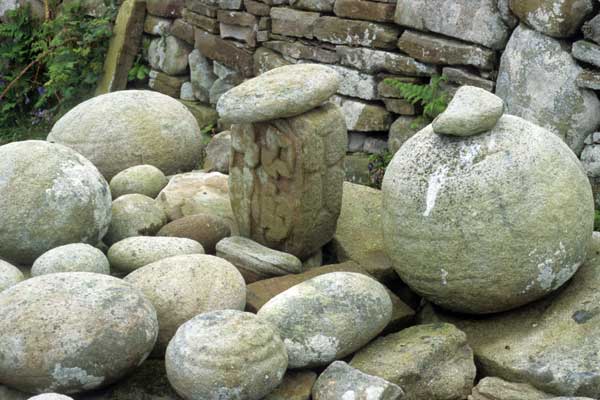
The earliest visitors to the island were possibly during the neolithic and definitely during the bronze age, and there are the possible remains of a burial structure near the natural harbour at Clashymore. The main ancient feature on Inishmurray today is the Cashel, a large dry-stone fort with walls that are still 5 meters high in places and are 3 to 4 meters thick; it was largly rebuilt by the board of works in the 1890's, who added a new entrance. The Cashel may date from the foundation of the monastery in the sixth century, or have been built for extra protection a few hundred years later when the Vikings began to visit these shores.
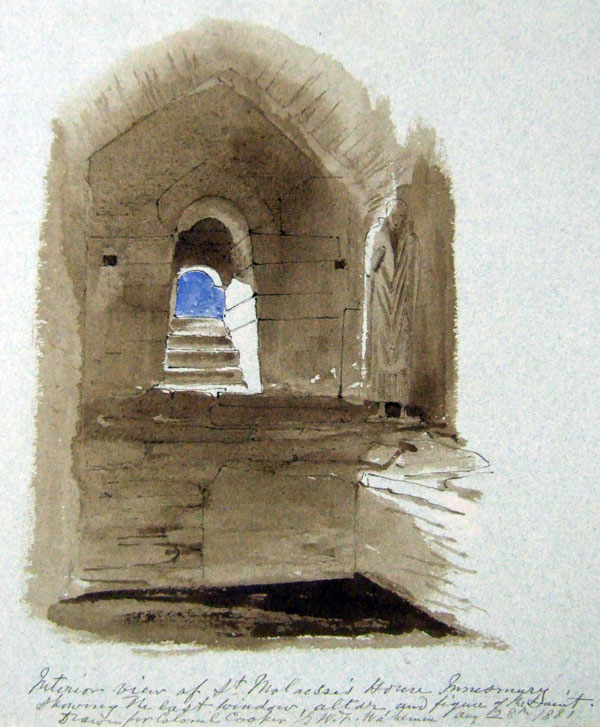
The monastery was raided by the Norsemen in 812.
During the early Christian period, an enormous amount of stone carving took place on the island. There are almost 100 carved stones and slabs in the collection, many with interesting and unusual crosses. The art of Inishmurray may prove to have links with the Holy Land, as several of the cross styles were used by crusading knights. A number were carved for grave slabs, while another gouup were set up on the leachta or altars scattered around the island.

The statue of St Molaise, right displayed in Molaise's church in an 1880 watercolour by William Wakeman. The statue may have held a bell and croser in his missing hands. All Wakeman images © Sligo County Library.
Within the Cashel are the famous Inishmurray Cursing Stones, na Cloch Breac, or Speckled Stones. These unusual objects are collected on the largest of the three altars within the enclosure. There are 14 egg-shaped sea-rolled stones carved with crosses and spirals, and many other sea-rolled stones with no art. Local lore says they were used either to bless (by spinning clockwise) or curse (spin anti-clockwise). Reportedly, they were last used by locals during WW II to curse Hitler - the war was affecting the island's sugar supply - a most important factor in the local industry, poteen brewing.
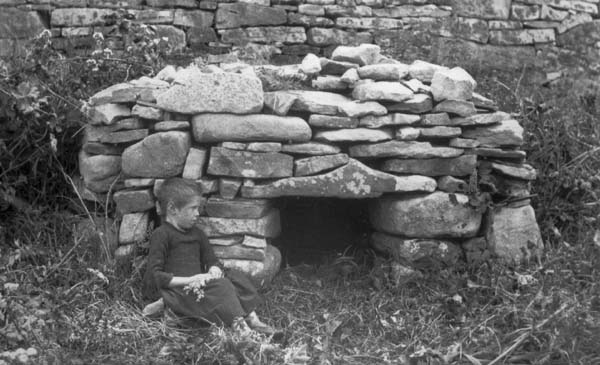
There are a sixteen stone altars, or leachta, arranged in a clockwise route around the island, and each 'station' was once marked by an engraved cross slab. A number of the slabs still remain in position, though several have been moved by the OPW in recent years as, like the slabs within the Cashel, they are in danger of being stolen. In 1998 and 1999 several of the leachta were excavated and rebuilt 10 - 15 meters inland as they were in danger of falling into the sea.
The majority of the cross slabs and other decorated stone from the Cashel are locked away in the schoolhouse at the east end of the island, now a depot for the OPW, and permission, which is very difficuly to obtain, is needed to view them. The Cashel, once an early Christian art gallery now has some seven decorated stones to be seen, and the Cursing Stones have been removed to Belfast by the OPW to make copies.

